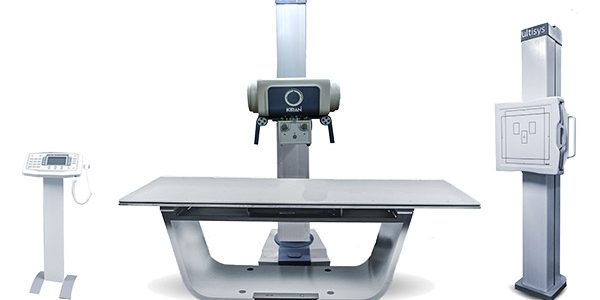Introduction
In the ever-evolving realm of healthcare, advancements in technology have significantly enhanced the diagnostic and treatment processes. Digital Radiography, often abbreviated as DR, is one such breakthrough in the field of medical imaging. DR has transformed the way X-ray images are acquired, processed, and interpreted, contributing to more accurate diagnoses and streamlined workflows in healthcare institutions worldwide.
In this blog post, we’ll delve deep into the world of Digital Radiography. From understanding the basic principles to exploring its applications and benefits, this guide aims to provide a comprehensive overview of this game-changing medical imaging technology.
Understanding Digital Radiography
The Basics
Traditional radiography involves the use of X-ray film, which is exposed to radiation to capture images of the human body’s internal structures. These films are then chemically processed, a time-consuming and sometimes less environmentally friendly procedure. Digital Radiography, on the other hand, replaces X-ray films with digital sensors that capture images directly onto a computer.
The process is quite straightforward:
X-ray Exposure: A patient is positioned in front of an X-ray machine, and the area of interest is exposed to X-rays.
Digital Sensor: Instead of film, a digital sensor records the X-ray photons that pass through the body.
Image Processing: The digital data is processed by a computer, producing a high-resolution image that can be viewed and stored electronically.
Benefits of Digital Radiography
Digital Radiography offers a myriad of advantages over traditional radiography, making it an indispensable tool in modern healthcare:
Reduced Radiation Exposure: DR systems are more efficient at capturing images, requiring less radiation exposure for the patient while maintaining high image quality.
Immediate Image Availability: Images are available instantaneously, eliminating the need for time-consuming film processing.
Enhanced Image Quality: Digital images can be manipulated for better visibility of specific structures, leading to improved diagnostic accuracy.
Lower Costs: Over time, DR systems can be more cost-effective than film-based systems due to reduced film and chemical expenses.
Environmentally Friendly: The elimination of film processing chemicals is a greener approach to radiography.
Efficient Data Management: Digital images can be easily stored, retrieved, and shared among healthcare professionals, enhancing collaboration and patient care.
Applications of Digital Radiography
Digital Radiography has found applications in a wide range of medical fields. Here are some key areas where DR technology is making a significant impact:
- General Radiology
In general radiology, DR is commonly used for imaging bones, chest, abdomen, and the skeletal system. It aids in the diagnosis of fractures, infections, and other conditions. - Dentistry
Digital Radiography has revolutionized dental imaging. Dentists can capture high-resolution images of teeth, gums, and the jawbone, enabling early detection of dental problems. - Orthopedics
Orthopedic surgeons use DR for assessing musculoskeletal conditions, joint problems, and bone injuries. Real-time imaging during surgery is also possible with DR. - Cardiology
In cardiology, DR helps in visualizing the cardiovascular system, detecting abnormalities, and guiding interventions like angioplasty and stent placement. - Emergency Medicine
In emergency departments, DR facilitates rapid diagnosis and treatment planning for trauma and critical care patients. - Mammography
Digital Radiography has significantly improved breast cancer screening. It allows for detailed, high-resolution mammograms, making early cancer detection more effective. - Veterinary Medicine
DR is not limited to human medicine; it has become an invaluable tool in veterinary medicine for diagnosing and treating various animal health issues.
The Future of Digital Radiography
As technology continues to advance, the future of Digital Radiography is promising. Here are some potential developments on the horizon:
- Artificial Intelligence Integration
AI algorithms are being developed to assist radiologists in image analysis, making diagnosis faster and more accurate. - 3D and 4D Imaging
Digital Radiography may evolve to provide more detailed three-dimensional and even real-time four-dimensional images for a deeper understanding of the human body. - Improved Portability
DR systems are becoming more compact and portable, enabling their use in remote or underserved areas. - Enhanced Data Security
As digital patient data becomes increasingly vital, improved data security measures will be implemented to protect sensitive medical information.
Conclusion
Digital Radiography has undeniably transformed the landscape of medical imaging. Its ability to provide high-quality, instant, and environmentally friendly images has made it a crucial technology in healthcare. With ongoing advancements and the integration of AI, we can expect DR to continue evolving, improving patient care and diagnostic accuracy.
The digital age has ushered in a new era of medical imaging, and Digital Radiography is at the forefront, revolutionizing the way we view and understand the human body. It’s not just a technological advancement; it’s a critical tool that saves lives, enhances patient care, and improves healthcare processes. As DR continues to evolve, we can anticipate even more exciting developments on the horizon, ultimately benefiting both healthcare professionals and the patients they serve.



